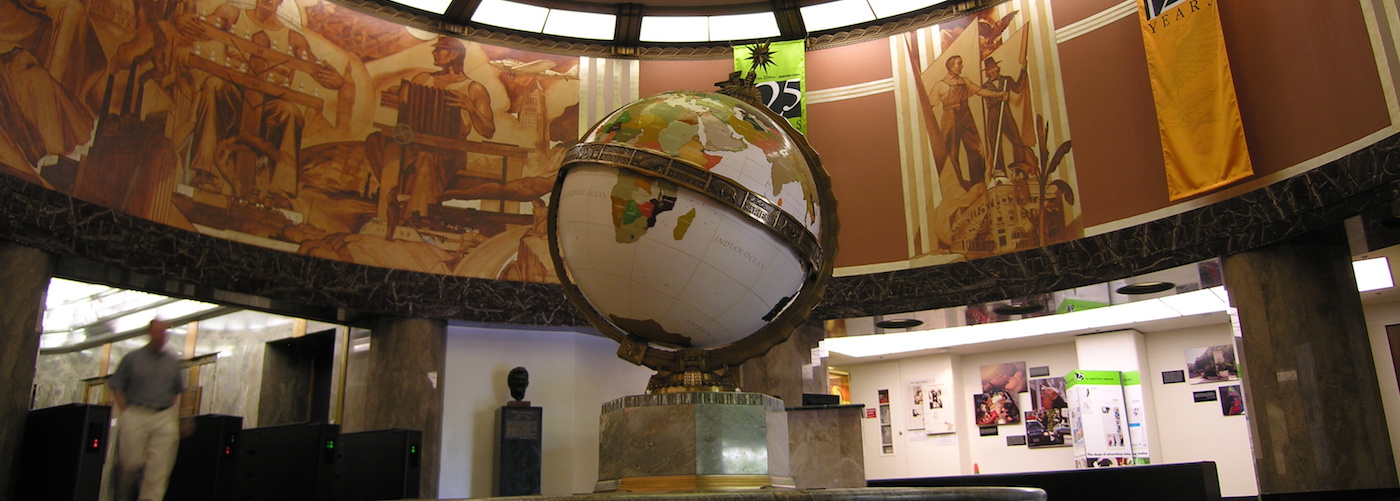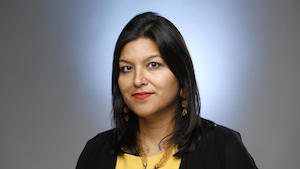
When the Los Angeles Times announced in June that it was hiring a reporter, Dexter Thomas, to cover Black Twitter, the Internet had many opinions and was not shy about expressing them.
The fact that @latimes hired a reporter to cover #BlackTwitter means that there is power within that hashtag
— Ifeoma Okah (@IfeomaOkah) July 9, 2015
Brilliant move by the @latimes, hiring Dexter Thomas to cover Black Twitter: https://t.co/fOGM1v0JuU
— Tamara Anima K (@anima_tk) July 11, 2015
Just read the LA Times' "Black Twitter" article. pic.twitter.com/yBT397qyvX
— Carolina Blitz (@VashtiHurt) July 16, 2015
The reactions to the new hire were mixed, but the new beat, which covers not only Black Twitter but also other minority communities online, was part of an effort led by S. Mitra Kalita, the Times’ managing editor for editorial strategy, to rethink the types of stories the paper covers.
 In March, when the Times hired Kalita away from Quartz, where she had been executive editor, Times editor Davan Maharaj wrote in a memo that her role at the Times would be to “develop and refine new styles of journalism.”
In March, when the Times hired Kalita away from Quartz, where she had been executive editor, Times editor Davan Maharaj wrote in a memo that her role at the Times would be to “develop and refine new styles of journalism.”
Even as the Times faces significant challenges to (and a little chaos in) its business — last week, parent company Tribune Publishing fired publisher Austin Beutner — the paper is looking to new beats and new platforms for storytelling, from SoundCloud to Snapchat, in order to expand the Times’ audience beyond its traditional readership. After all, climate change and immigration debates in California influence the rest of the United States, too.
“I see an opportunity in framing broader stories through the California lens and achieving audience in our state and throughout the world,” Kalita told me.
Prior to joining Quartz, Kalita worked at The Wall Street Journal and at the Indian business newspaper Mint, where she was a founding editor.
Kalita and I talked about her goals for the Times and how her previous experiences at Quartz, the Journal, and Mint are influencing her current role. Here’s a lightly condensed and edited transcript of our conversation, which occurred before the publisher change.
Dexter Thomas made a lot of headlines when we hired him because he’s covering Black Twitter as well as other communities of interest online. When it was the fiftieth anniversary of Watts in August, he did something that initially existed on Mixcloud. The L.A. Times doesn’t get a piece of that, but he then came back and transcribed the story. The headline is “The soundtrack to Watts, then and now.” He asked an African American art historian, a jazz musician, and a Watts neighborhood activist: What are the songs that invoke Watts 50 years ago and what are the songs now? He’s okay with readers being a part of his reporting process.
Watts: the sounds after the riots by Mixtape Show / Dex Digital on Mixcloud
During the 10-year anniversary of Hurricane Katrina, I asked if we should do a story on what it would have been like if we’d been on social media during Katrina, or if Black Twitter had existed during Katrina. He put that out to Twitter.
If you were areas affected by Katrina or hv friends/fam there, get at me. I want to hear from you.
What would you have done with Twitter?
— でじことdex digital (@dexdigi) August 22, 2015
Something about it wasn’t sitting well with him. I think every reporter can identify with that moment when an editor asks you to do something and you just don’t think it’s a good idea. He put it out there in a fairly transparent way, and people said that it felt kind of exploitative. There have been a lot of stories on what if the Internet had existed during X or Y. What do we really mean by that? Is this going to be a case where more images, mostly of African Americans, are used to evoke sympathy, or outrage?
There was a really thoughtful discussion on Twitter about whether this warranted a story, and he didn’t do the story. He did what reporters have been doing for a long time, which is to do their editor one better. He did a story, “When Kanye West told George Bush that Black Lives Matter.” He isolated that moment that Kanye West accused George Bush of literally not caring about black people. It took a moment and contextualized it with the present.
I think that’s an example of how the L.A. Times is changing its news-gathering process. It’s identifying communities of interest that form around content. There’s the reverse as well: Content often forms around communities. How can we tap into that? I hesitate to say it’s entirely driven by social media, because our single largest point of entry remains LATimes.com. Readers come to us to understand what’s happening in Los Angeles, in California, in Washington, D.C., and in the world. So it’s incumbent upon us to alert them to some of these conversations as well. For me, having been in more niche startup spaces for the last 10 years, that’s a real gift.
Take Donald Trump and the comments he’s made about “anchor babies” and the border. If you look at the L.A. Times’ coverage, there’s a lot of explanatory reporting, peeling back the layers using data, as well as using geography. We are in California; there is an Asian birth tourism market here. What can we tell you that “truth-squads” what Trump is saying but sheds light on the community at the same time? How do we write not about those communities, but for those communities? How do we begin to tell stories from the inside out? We want to appeal to those who know the story very well, and also to those who are just entering the story for the first time.
The Internet and the distribution models available to us now are a great help in that process. One example is a story we did on Jorge Ramos. On the night of August 25, Donald Trump kicked out Jorge Ramos during a news conference. He said, “Go back to Univision,” which was a fairly incendiary comment. That was reported on a spectacle, but it was also a chance for us. We have a large Latino readership and felt that we needed to own the collision of media and immigration and racial issues that were in that news event. So the next day, we posted a story with the headline “In taking on Jorge Ramos, Donald Trump may have tussled with the wrong media star.”
Some other outlet might have done it as “The five things you need to know about Jorge Ramos,” but we needed to signal that we know who Jorge Ramos is. Our readers know who Jorge Ramos is. There is a national audience, or a fraction of it, that perhaps doesn’t know who he is. How could we write that story again so that it serves two audiences at the same time?
I can think of a number of topics that emanate out of California — race and immigration, health and wellness, technology, environment and coastal management, the drought and the future of water — that are not just national stories, but really pressing global issues. I see an opportunity for us in framing those broader stories through the California lens and achieving audience in our state and throughout the world.
I don’t know if it’s specific to Quartz, as much as to being at a digital-only outlet and a startup. I would even say this about Mint — it was a newspaper, but it was a no-name product. Every startup starts with an audience of zero, and you have to win over readers. Some of that ethos has been interesting for me to marry with the day-in-and-day-out audience of the L.A. Times. People show up to be informed about what’s happening around them. But because of the way a paper is set up, you are often focused on what the story will be once an event is over.
For a digital outlet, there’s an imperative to feel present throughout the life of a story. At the L.A. Times, we’re making strides in being a go-to during events like the Republican debates. Trump’s entry and the issues that he’s forcing are of national interest, but they are of even greater interest to our readers because of race and immigration. The other piece of it is that he’s become a media spectacle. So we need to take issues of media, entertainment, and spectacle head on. What is this reflecting in our society?
Live events, like the Republican debates, are an example. We started a live blog called Trail Guide. During the debates, it’s a place that you can hang around. It’s the second-screen experience. That’s a role we can play because we already have a built-in readership turning to the L.A. Times for news, but now they can turn to us during an event, too. And certainly, given the entertainment industry here, you can see how [liveblogging] is a given during TV episodes, award shows, and red-carpet premieres. We’ve started to rethink the way we cover some of those things.
The New York Times, The Washington Post, and The Wall Street Journal don’t have the same exact local focus that we do. If you take what we know about digital journalism and apply it to a metro market like ours, what does back-to-school coverage look like? When Los Angeles Public Schools went back on August 18, our reporter was out there at 5:30 in the morning Snapchatting what she saw, and later that became a video that we stitched together using her Snapchat video and then ran on the site. When Taylor Swift was in town, that was another opportunity to Snapchat.
The first day of school — snapchatted by @Sonali_Kohli
http://t.co/XpLX9ZmXLe
— S. Mitra Kalita (@mitrakalita) August 19, 2015
Can we remake local reporting as we know it, and in the process bring in new audiences? By doing back to school on Snapchat, some of the kids who are going back to school are going to be our audience. We’re including them, as opposed to writing down to them.
We’ll continue to experiment with that, but my goal is to bring it back to the site, too. We want LATimes.com to be a destination. Even as we recognize that our readers are discovering us in different ways, my goal is to create a destination that captures the way Los Angeles is living its life. All these platforms, and the types of creative storytelling they allow, make the rest of our products — the website, the newspaper, the events we do — much more vibrant.
There’s a lot of integration of digital into the newsroom, but we’re also redefining the story, and asking what is the best way to tell this. Where is the best place to tell this? There may be multiple places and multiple answers, and that’s okay. It’s okay, on a few stories of the day, to really have different strategies going on for different aspects of the paper.